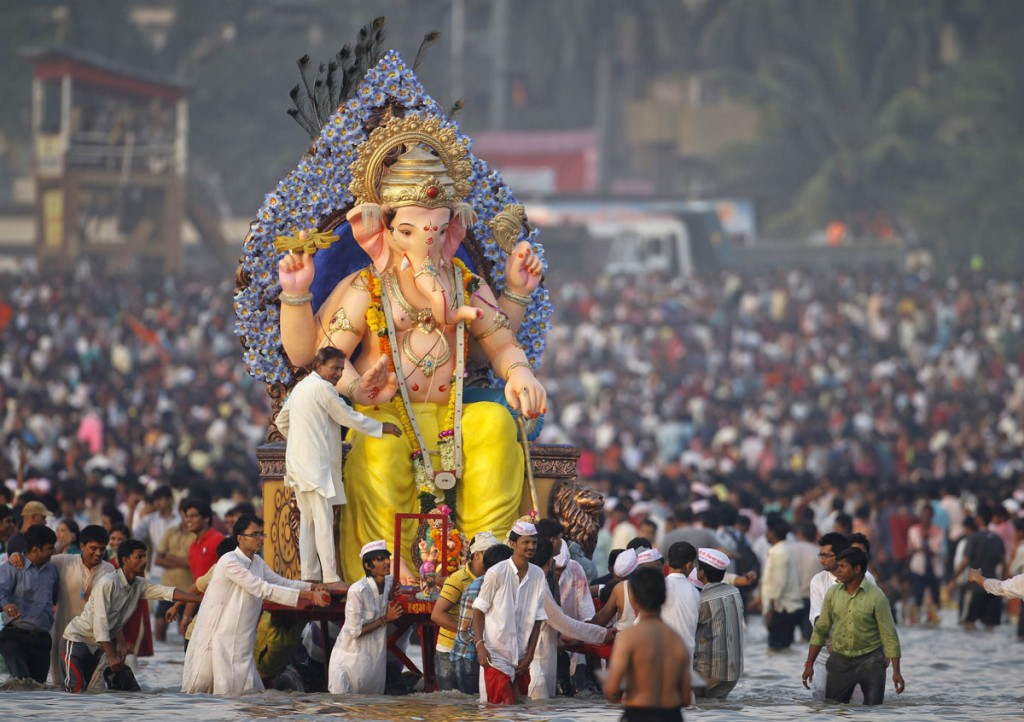 Most Hindu temples will have sacred images of Gods and Goddesses. In Sanskrit these sacred images are called murtis, which literally means, “forms or shapes.” In general, Hindus worship through the help of these murtis whether in temples or in private homes. In temples two kinds of sacred images can be found: chala murtis and achala murtis. The word “chala” means “movable” and “achala” means “immovable.” The achala murti is the sacred image, usually made of stone, that is permanently installed in the temple. Such images are generally between three and five feet in height and are cemented into place. The chala murti, on the other hand, is a small sacred image that can easily be moved by priests. Chala murtis are generally made of metal and are much smaller in size and they can usually been seen on an altar standing in front of or to the side of the achala murti. Another more common name used to describe the movable or chala murti is Utsava Murti. “Utsava” means festival, so the Utsava Murti is the “festival murti” so called because it can be easily moved around for festival purposes that include processions, bathing ceremonies or sacred marriage ceremonies (see kalyana) and so on.
Most Hindu temples will have sacred images of Gods and Goddesses. In Sanskrit these sacred images are called murtis, which literally means, “forms or shapes.” In general, Hindus worship through the help of these murtis whether in temples or in private homes. In temples two kinds of sacred images can be found: chala murtis and achala murtis. The word “chala” means “movable” and “achala” means “immovable.” The achala murti is the sacred image, usually made of stone, that is permanently installed in the temple. Such images are generally between three and five feet in height and are cemented into place. The chala murti, on the other hand, is a small sacred image that can easily be moved by priests. Chala murtis are generally made of metal and are much smaller in size and they can usually been seen on an altar standing in front of or to the side of the achala murti. Another more common name used to describe the movable or chala murti is Utsava Murti. “Utsava” means festival, so the Utsava Murti is the “festival murti” so called because it can be easily moved around for festival purposes that include processions, bathing ceremonies or sacred marriage ceremonies (see kalyana) and so on.